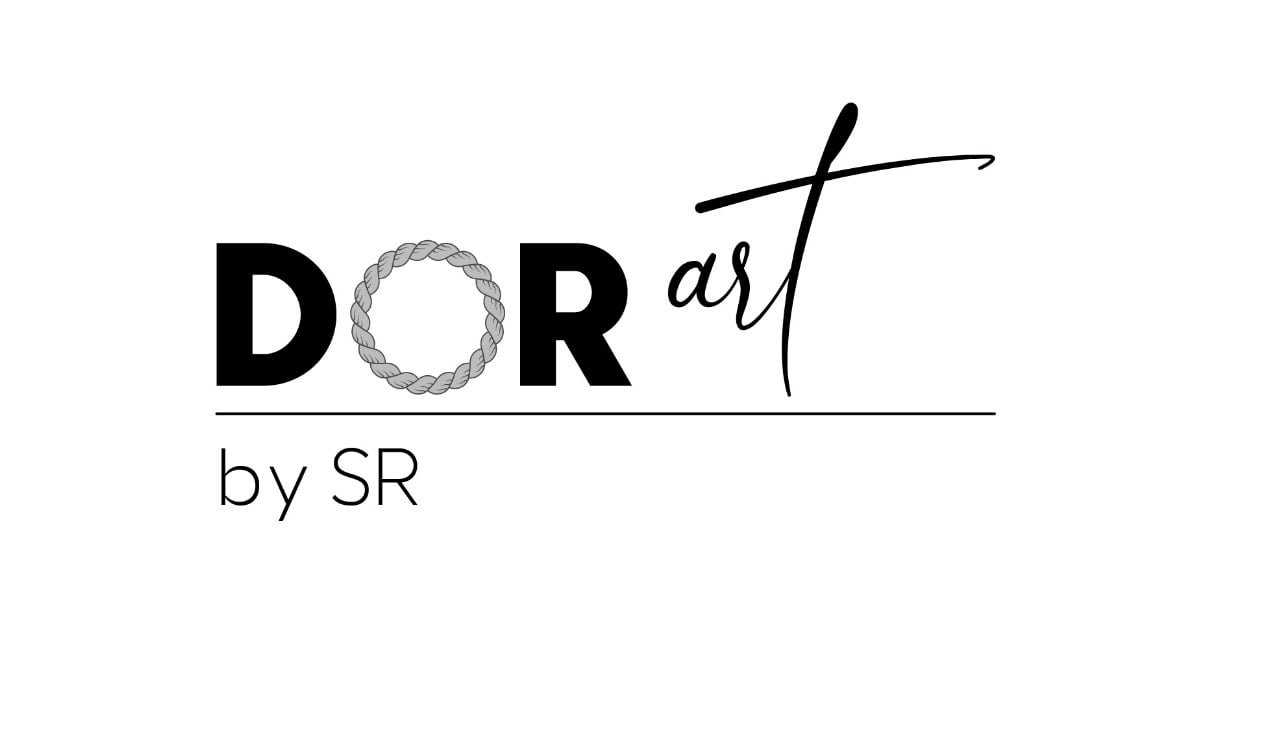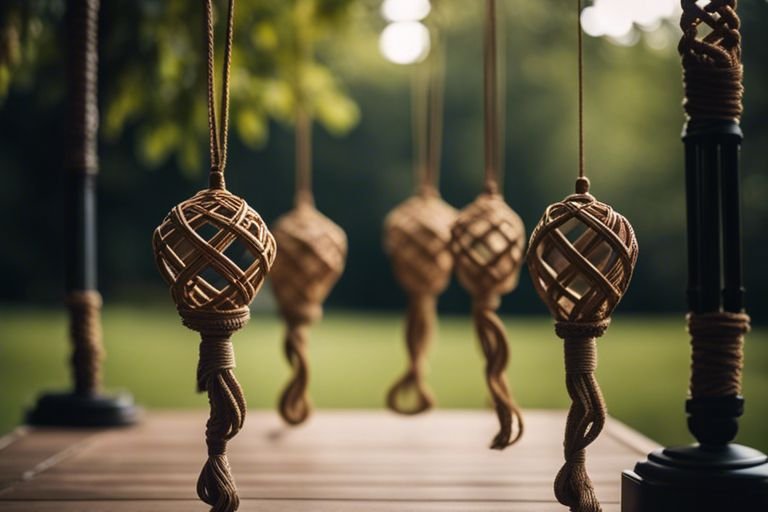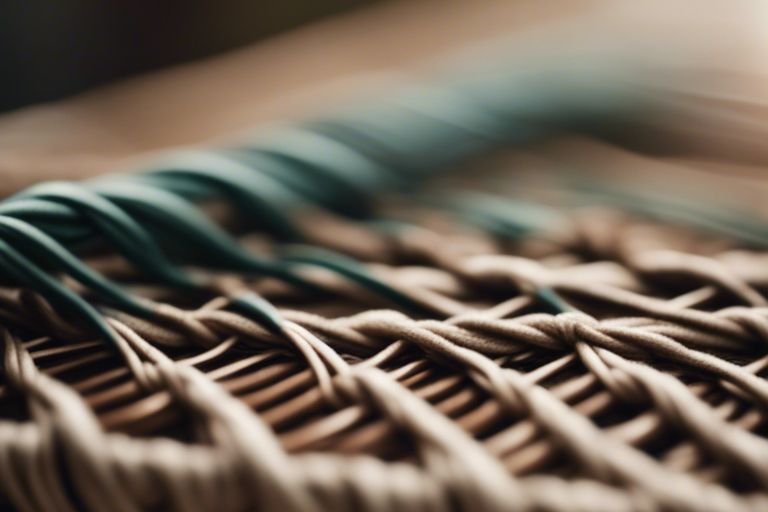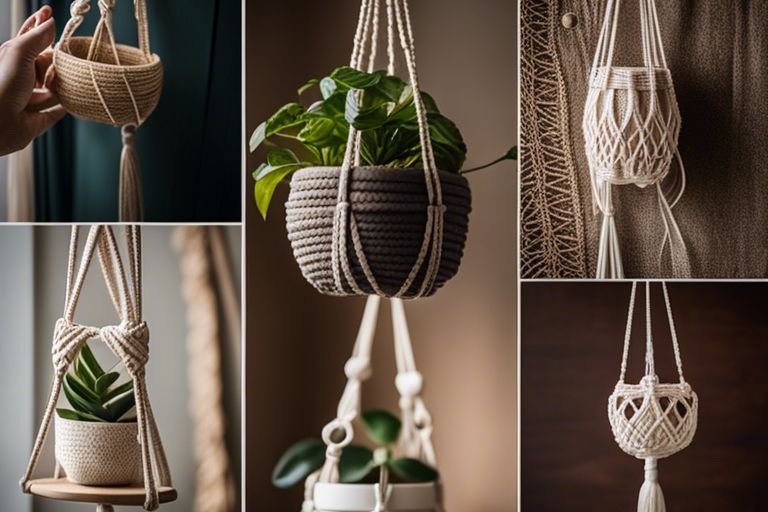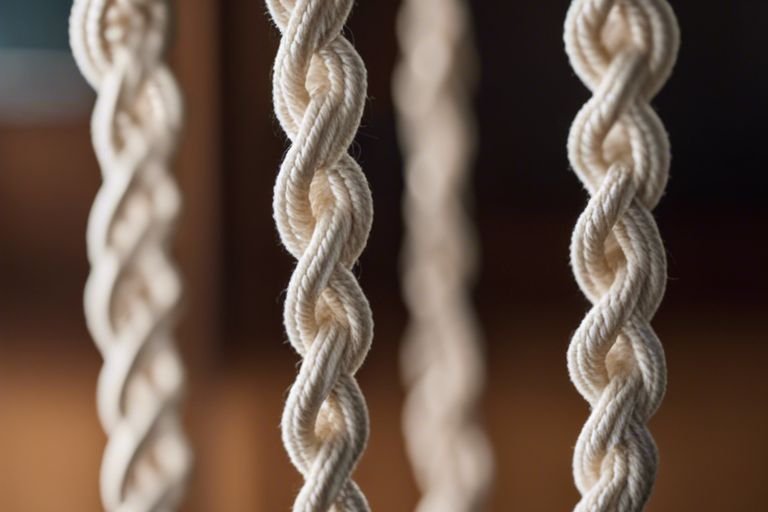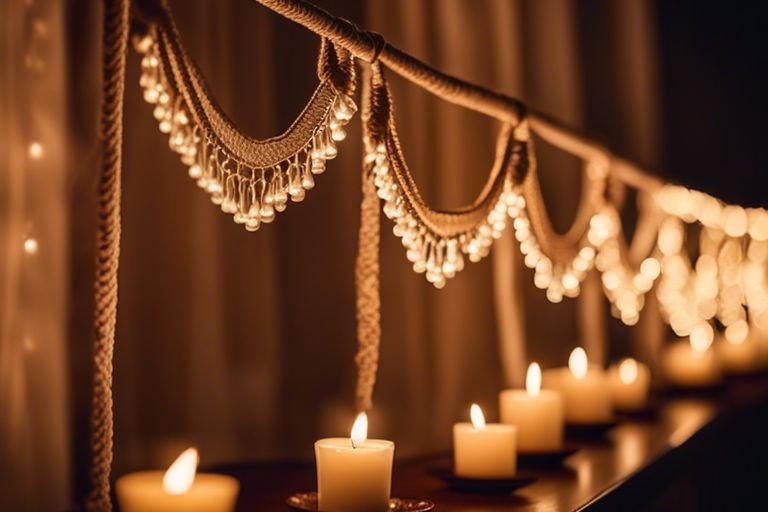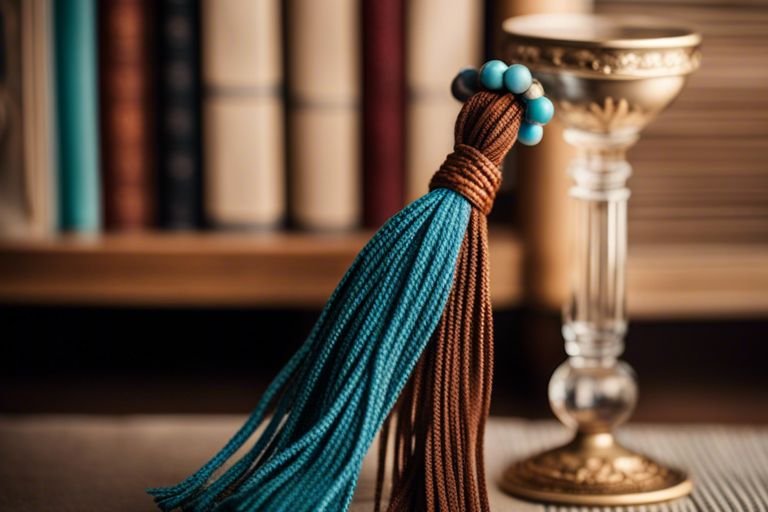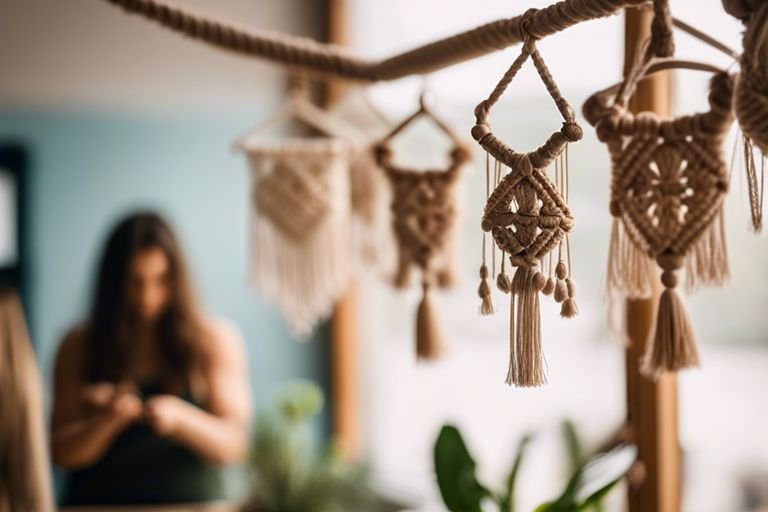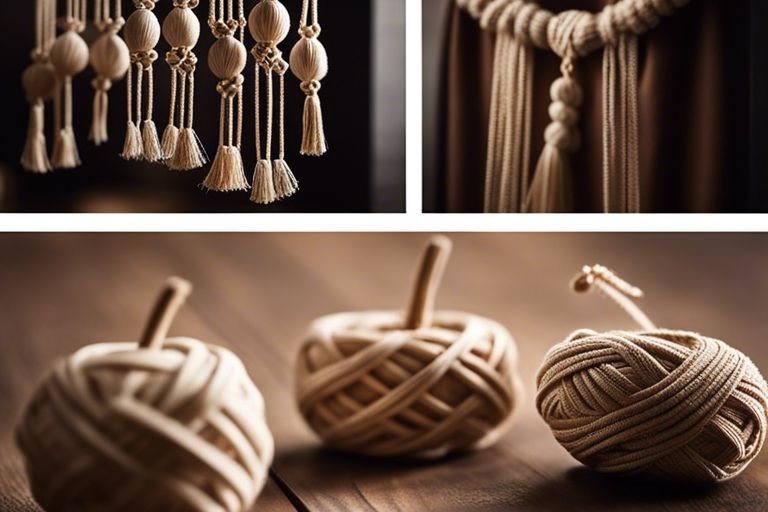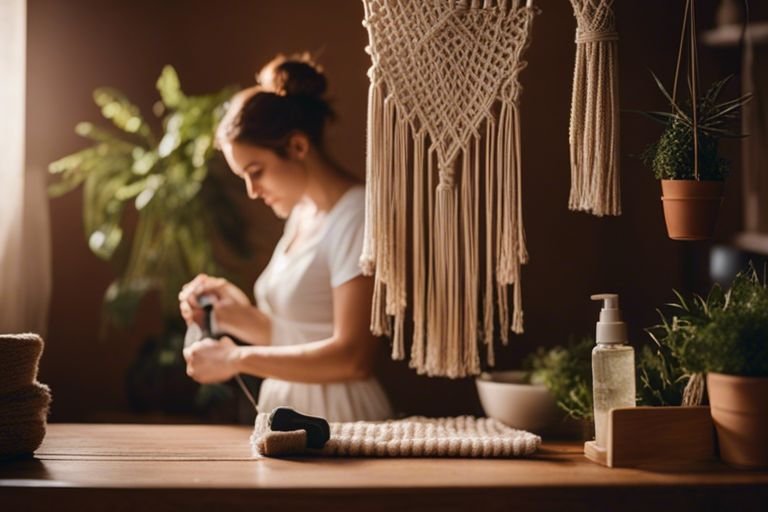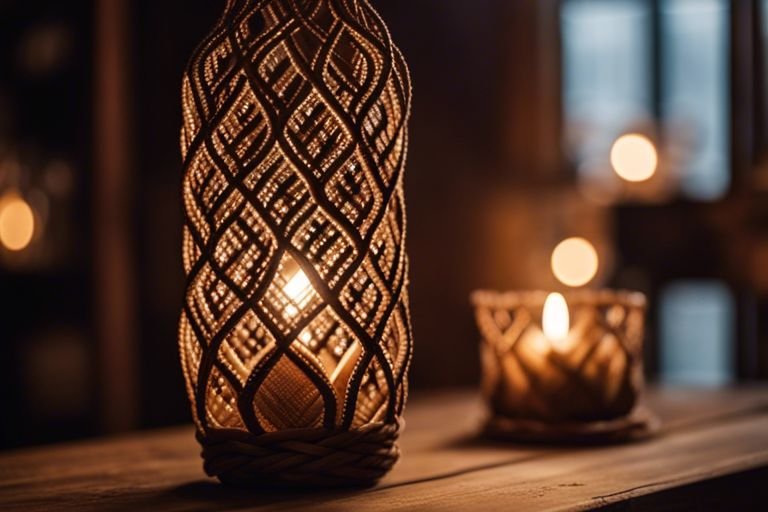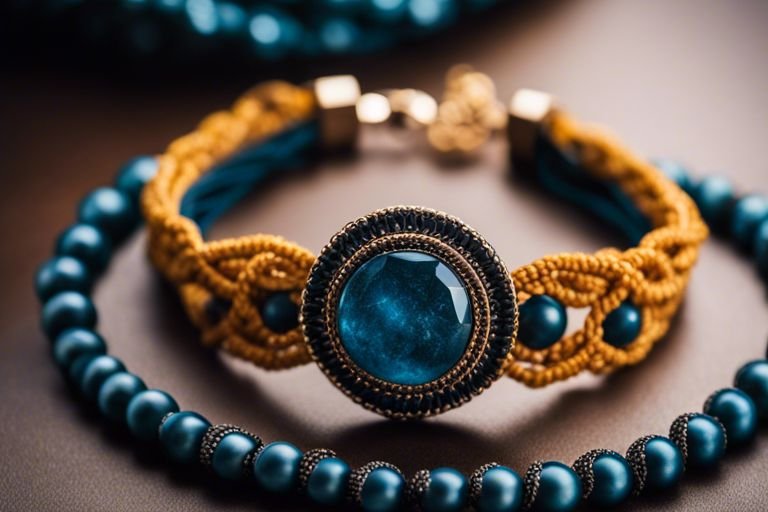Just when you thought macrame was exclusively for plant hangers and wall hangings, think again. Embrace the art form’s versatility and look into the world of three-dimensional macrame sculptures and art installations. By pushing the boundaries of traditional macrame techniques, you can create captivating and dynamic pieces that add a unique touch to any space. In this blog post, we will explore how to experiment with creating three-dimensional macrame sculptures. Allowing you to unlock a whole new level of artistic expression.
Key Takeaways:
- Unleash Creativity: Experimenting with three-dimensional macrame sculptures allows artists to explore innovative shapes and forms beyond traditional two-dimensional designs.
- Unique Artistic Expression: Creating macrame sculptures and art installations offers a distinctive way to showcase creativity and add a unique touch to spaces through intricate knotting techniques and textures.
- Depth and Dimension: Three-dimensional macrame sculptures add depth and dimension to spaces, enhancing visual interest and creating a captivating focal point in any environment.

Materials and Tools
Any Current Art Obsession: TEXTURE enthusiasts plunging into the world of macrame sculptures know the importance of using the right materials and tools. The choice of cords, ropes, and the selection of tools are the most important factors. It can significantly impact the outcome of your three-dimensional creations.
Types of Cords and Ropes
Regarding macrame sculptures, the type of cord or rope you choose plays a vital role in the overall look and durability of your piece. Different materials offer a variety of textures, thicknesses, and colors. This allows you to explore different visual effects and finishes. Some popular options include cotton, jute, linen, and synthetic fibers. Make sure to experiment with different cords to see which works best for your artistic vision.
| Cotton | Soft and pliable; great for intricate knotting |
| Jute | Durable and sturdy; adds a rustic touch to your sculptures |
| Linen | Elegant and smooth; ideal for more delicate designs |
| Synthetic Fibers | Durable and versatile; available in a wide range of colors |
| Assume that | Each type of cord will produce a unique look and feel in your macrame sculptures. |
Selecting the Right Tools for macrame Sculptures
One of the crucial aspects of creating macrame sculptures is selecting the right tools for the job. The art form requires minimal equipment. Having the proper tools can make the process smoother and more enjoyable. Basic tools like scissors, a tape measure, and a sturdy surface to work on are crucial. Additionally, specialized tools like tapestry needles, combs, and macrame boards can help you achieve specific techniques or details in your sculptures.
This comprehensive guide aims to provide you with the necessary knowledge to embark on your macrame sculpture journey with confidence. You can unleash your creativity and explore the endless possibilities of three-dimensional macrame art. It is by understanding the different types of cords, and ropes and selecting the right tools for your projects.
Basic Knots for Structural Integrity
For beginners, mastering the basic knots is vital to creating macrame sculptures with structural integrity. With techniques like the square knot, spiral knot, and lark’s head knot, you can ensure that your macrame project is sturdy and well-constructed.
Advanced Patterns for Three-Dimensional Effects
Integrity
| Pattern | Description |
| Pineapple Knot | Creates a textured and intricate look, ideal for adding depth to your sculpture. |
| Vertical Double Half Hitch | Allows you to build height and dimension in your macrame design, perfect for creating a layered effect. |
To achieve stunning three-dimensional effects in your macrame sculptures, advanced patterns are key. With techniques like the pineapple knot and vertical double half hitch, you can add depth and texture to your art pieces, making them truly stand out.
To
| Pattern | Description |
| Macrame Mandala | A circular design that adds a sculptural element to your art installation, creating a focal point in any space. |
| Shell Stitch | It provides a delicate and intricate look, ideal for incorporating organic shapes into your macrame sculptures. |

Designing Macrame Sculptures
Conceptualizing Your Art Piece
On Summer Art Camp 2024 – ICA, unleash your creativity by conceptualizing your macrame art piece. Consider the themes, emotions, and stories you wish to convey through your sculpture. Visualize the overall look and feel you want to achieve, allowing your imagination to flow freely. This initial stage is crucial in laying the foundation for a captivating and meaningful art piece.
Incorporating Texture, Shape, and Scale
With macrame sculptures, texture, shape, and scale play vital roles in creating visual interest and depth. Experiment with different types of knots to add texture and intricacy to your piece. Play with varying shapes and sizes to create contrast and balance within the sculpture. Consider how the scale of your artwork interacts with its surroundings, whether it’s a small corner or a large gallery space.
Another aspect to consider is incorporating natural elements such as driftwood or metal rings to enhance the tactile experience and overall aesthetic of your macrame sculpture. These additions can elevate your piece and make it truly unique and visually striking.
Courtesy By: MACRAMEMAGICKNOTS
Installation and Display
Mounting and Hanging Options
Any macrame sculpture or art installation needs to be properly mounted and displayed to ensure its structural integrity and visual impact. When considering hanging options, sturdy hooks or brackets should be used to support the weight of the piece. It’s important to assess the strength of the wall or ceiling where the sculpture will be displayed to prevent accidents or damage.
Considerations for Public Art Installations
Considerations for public art installations go beyond just aesthetic appeal. When installing macrame sculptures in public spaces, factors like durability, weather resistance, and safety measures should be taken into account. It is crucial to obtain any necessary permissions or permits before installing public art to ensure compliance with regulations and avoid any legal issues.
Understanding the environment where the sculpture will be displayed is key. Public art installations are subject to different conditions than indoor displays, such as exposure to weather elements, vandalism risks, and potential maintenance challenges. It’s vital to collaborate with local authorities or organizations to address these considerations effectively and ensure the longevity of the artwork.

Conclusion
Considering all the points discussed, exploring the world of macrame sculptures offers a captivating avenue for artists to express their creativity in a three-dimensional form. Experimenting with creating unique art installations and sculptures allows for an exciting exploration of textures, patterns, and shapes, resulting in truly one-of-a-kind pieces. The intricate knotting techniques and diverse materials used in macrame offer endless possibilities for artists to push the boundaries of traditional fiber art and create stunning, visually appealing creations that can elevate any space.
FAQ
Q: What is macrame sculpture?
A: macrame sculpture is a form of art that involves creating three-dimensional sculptures using knotting techniques. Typically associated with traditional macrame. It allows for unique artistic expression and the creation of stunning art installations.
Q: What materials are used in macrame sculptures?
A: macrame sculptures are typically made using natural materials such as cotton, linen, or jute ropes. In addition, metal or wooden frames can be used as structural support for larger sculptures.
Q: Do I need prior experience to create macrame sculptures?
A: It is not necessary to create macrame sculptures. With practice and patience, beginners can also create beautiful and intricate sculptures.
Q: How can I get started with creating macrame sculptures?
A: You can begin by learning basic macrame knots such as the square knot, spiral knot, and half-hitch knot. There are plenty of online tutorials and books available to help you learn the necessary techniques.
Q: What are some ideas for macrame sculptures and art installations?
A: Some ideas for macrame sculptures and art installations include hanging plant holders, wall hangings, room dividers, and large-scale outdoor installations. The possibilities are endless, and you can let your imagination run wild with different shapes and designs.
Q: How can I display my macrame sculptures?
A: We can do it in a variety of ways. for example:
1) Hanging from the ceiling or a wall
2) Placed on a stand or base
3) Suspended outdoors in a garden or patio.
Consider the size and weight of your sculpture when choosing a display method.
Q: How can I care for and maintain my macrame sculptures?
A: You can gently dust them periodically with a soft brush or cloth to remove any dirt or debris. If your sculpture is exposed to moisture, make sure to allow it to dry completely to prevent mold or mildew growth.

